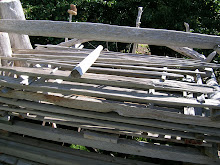 How curious to arrive at the sense of friends with whom to creatively play, only to discover my play is primarily a solitary act which involves friends peripherally. I wonder if this is true for others.
How curious to arrive at the sense of friends with whom to creatively play, only to discover my play is primarily a solitary act which involves friends peripherally. I wonder if this is true for others. The intimacy of play requires a certain shared perspective. Do we choose playmates with initial attention to values and behavioral habits? Do we all need slightly different companions? And do we need committed players?
Consider again the amount of structure, the physical activity, the non verbal communication, and the intuitions conducive to play. Consider the need for surprise, the need for touch, the need for understanding, the need for optimism, the need for humor, the need for laughter, the need for spontaneous plans, the need for emotional expression, the need for truth telling, the need for secrets, the need for time. Consider the needs that we don’t find on this list yet that we know. And, of course, we occupy a section on a continuum in relation to these factors. In relation to these needs we find sections representing others' needs. We may fit in better with people receptive to our needs but not sharing the same needs.
I think my playmates are imaginary, though I am willing for others to be present while I play. Mostly I am a play hermit. But since many of us aren't hermits, let's explore this realm.
Our needs will change as we play. At first we might think that children would make good playmates. But we don’t want to draw them out of their childhood with adult perspectives and biases. Another grown up provides a better choice with whom to start. To youth we want to offer reminders to never give up on play as a valuable resource. We want to support just hanging out. When including a young person, their developmental needs deserve extra attention. A slightly different balance sets the play dynamic.
K teaches me that more than enough of everything exists to feed the world and meet our basic needs within an environmental balance. The balance yields complexity but not difficulty.
M teaches me that we can all get along with each other and make meaningful connections that help ground us in the deep sense of belonging to this place and this time.
Playmate Exercise #! Hunh?
(alot is to braver more innocent players)
A once written line that I can’t figure out.
 Perhaps this came from a typographical error. Perhaps it came from an idea that escaped and left this odd word string? Can it relate to choosing playmates? I'll make up that this line serves as an attempt to say that we draw on the innocent side of friends, when we play. I could see the line being rewritten as: ”The art of play begins with a shared state of innocence.” What we hope to create represents a network of dedicated people who want to experience all that play has to offer. Try and find someone with whom to make up what the line means or choose another “senseless” aphorism to explore. And consider playing along side, if playing with seems to forgo playfulness.
Perhaps this came from a typographical error. Perhaps it came from an idea that escaped and left this odd word string? Can it relate to choosing playmates? I'll make up that this line serves as an attempt to say that we draw on the innocent side of friends, when we play. I could see the line being rewritten as: ”The art of play begins with a shared state of innocence.” What we hope to create represents a network of dedicated people who want to experience all that play has to offer. Try and find someone with whom to make up what the line means or choose another “senseless” aphorism to explore. And consider playing along side, if playing with seems to forgo playfulness.

1 comment:
The broken plate glued together and adorned with newspaper scraps - I find it immensely appealing...
Knowing a bit about your background, it seems to me a perfect symbol for genealogy: The plate as a symbol for family (nourishment, feeding the family...). It broke through too much use, carelessness or tragedy, we cannot know. And it was glued back together with the break lines being covered by words - so fitting when doing Jewish genealogy. It seems to me like a special way of honoring the "people of the book" - using the printed word, maybe even wisdom, to repair what was once broken.
Perfect.
Post a Comment